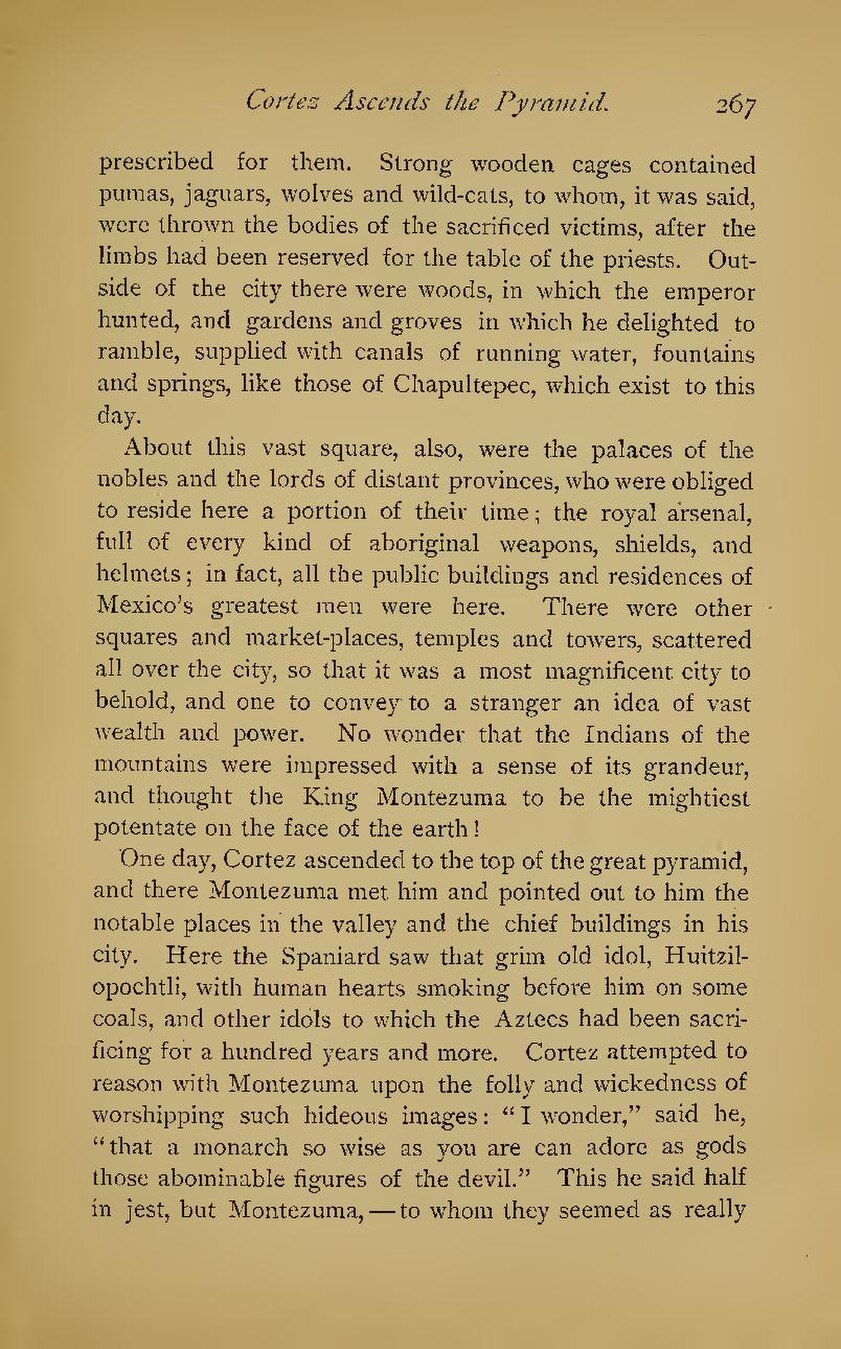prescribed for them. Strong wooden cages contained pumas, jaguars, wolves and wild-cats, to whom, it was said, were thrown the bodies of the sacrificed victims, after the limbs had been reserved for the table of the priests. Outside of the city there were woods, in which the emperor hunted, and gardens and groves in which he delighted to ramble, supplied with canals of running water, fountains and springs, like those of Chapultepec, which exist to this day.
About this vast square, also, were the palaces of the nobles and the lords of distant provinces, who were obliged to reside here a portion of their time; the royal arsenal, full of every kind of aboriginal weapons, shields, and helmets; in fact, all the public buildings and residences of Mexico's greatest men were here. There were other squares and market-places, temples and towers, scattered all over the city, so that it was a most magnificent city to behold, and one to convey to a stranger an idea of vast wealth and power. No wonder that the Indians of the mountains were impressed with a sense of its grandeur, and thought the King Montezuma to be the mightiest potentate on the face of the earth!
One day, Cortez ascended to the top of the great pyramid, and there Montezuma met him and pointed out to him the notable places in the valley and the chief buildings in his city. Here the Spaniard saw that grim old idol, Huitzilopochtli, with human hearts smoking before him on some coals, and other idols to which the Aztecs had been sacrificing for a hundred years and more. Cortez attempted to reason with Montezuma upon the folly and wickedness of worshipping such hideous images: "I wonder," said he, "that a monarch so wise as you are can adore as gods those abominable figures of the devil." This he said half in jest, but Montezuma,—to whom they seemed as really
